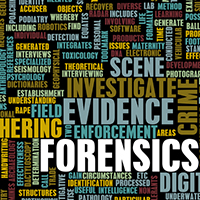Forensic linguistics. Reality Monitoring and Criteria Based Content Analysis (CBCA): comparison between methods

All claims expressed in this article are solely those of the authors and do not necessarily represent those of their affiliated organizations, or those of the publisher, the editors and the reviewers. Any product that may be evaluated in this article or claim that may be made by its manufacturer is not guaranteed or endorsed by the publisher.
Forensic linguistics is about the analysis of written, oral or non-verbal language in the legal field. For this purpose it employs tools finalised to the quantification and qualification of information. Among those we find Reality Monitoring, that discriminates between internal and external memories; Criteria Based Content Analysis, which uses nineteen criteria to verify the authenticity of a speech; Statement Validity Analysis; Scientific Content Analysis; Step Wise Interview. The comparison between these disciplines (and an overview on those) is preceded by important observations about cognitive and mnemonic processes and the role of the interviewer in the collection of testimony.


 https://doi.org/10.4081/psyco.2020.551
https://doi.org/10.4081/psyco.2020.551



